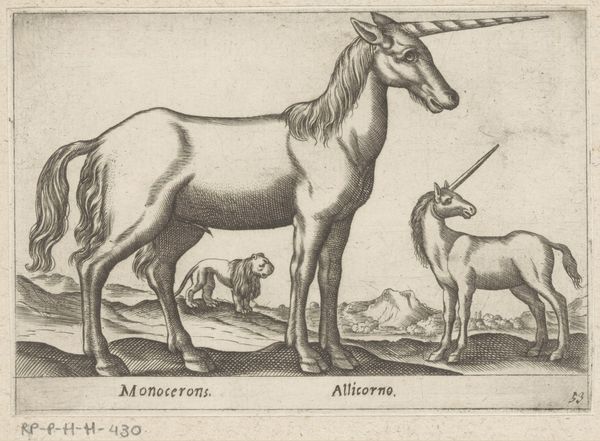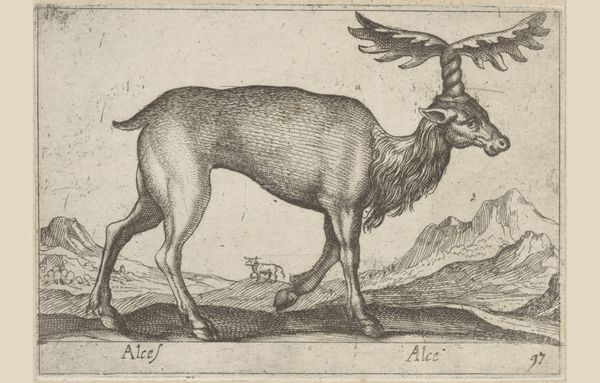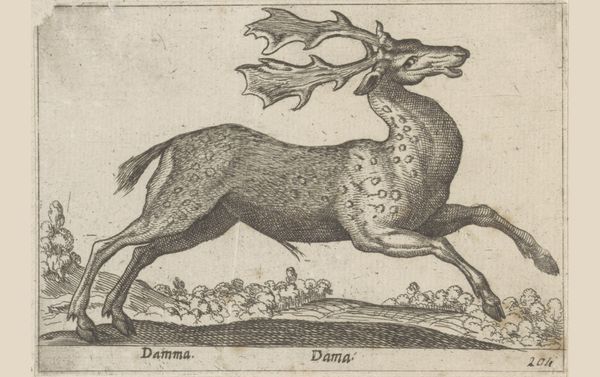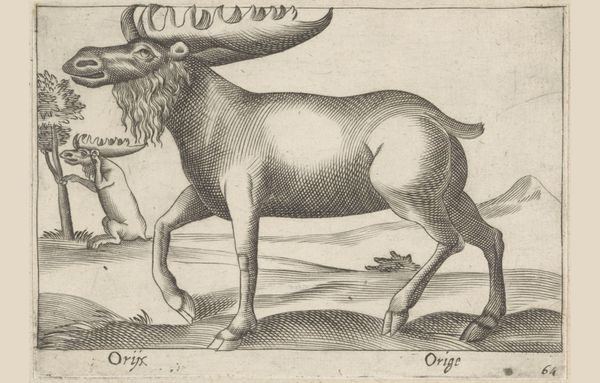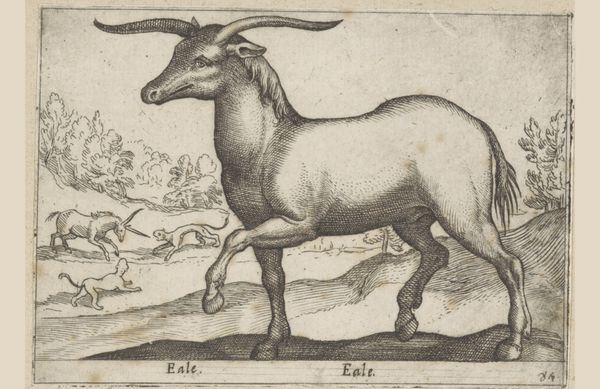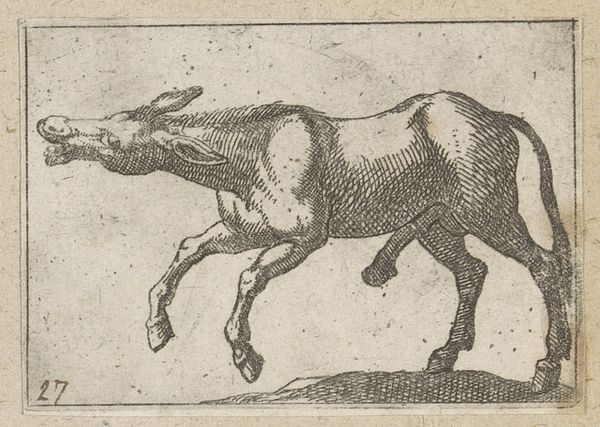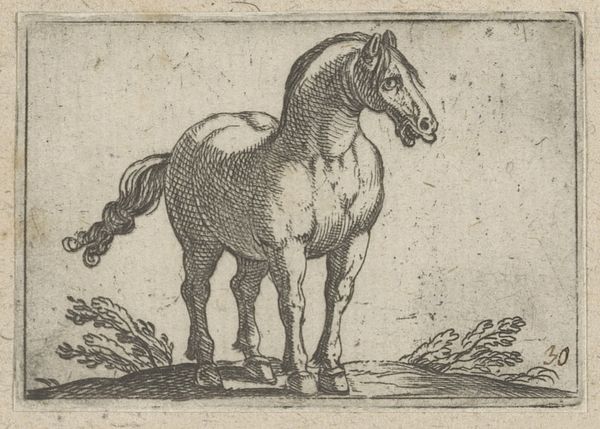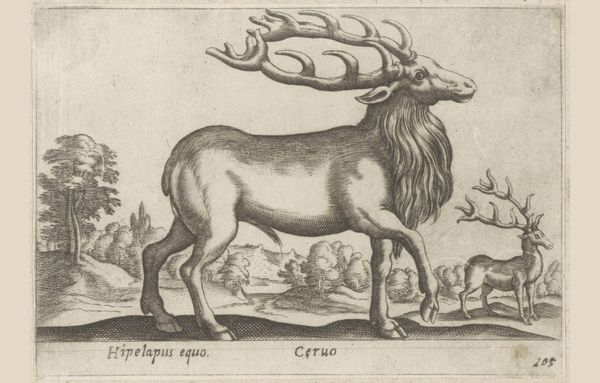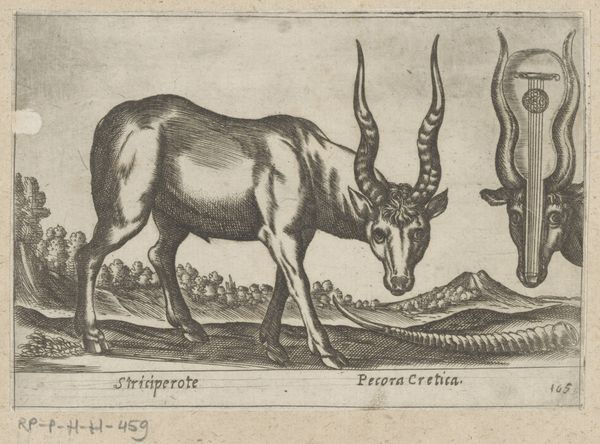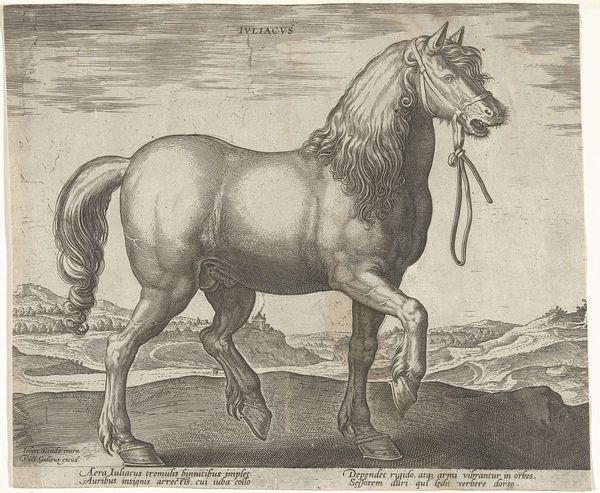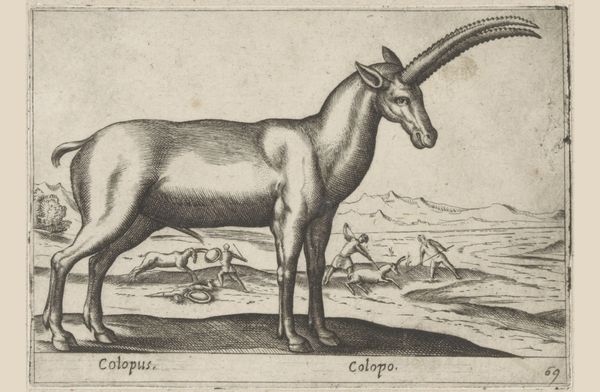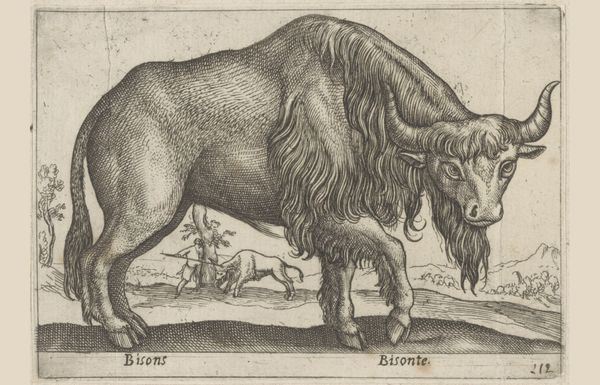
print, engraving
#
baroque
#
animal
# print
#
old engraving style
#
landscape
#
figuration
#
engraving
Dimensions: height 95 mm, width 137 mm
Copyright: Rijks Museum: Open Domain
Curator: Here we have "Eenhoornige ezel," or "Unicorn Donkey," a pre-1650 engraving by Antonio Tempesta, part of the Rijksmuseum collection. Editor: My first thought? It's hilariously awkward! Like a medieval meme. The shading and musculature are well-rendered, but the horn, the grumpy face, the, ahem, "prominent" features, make it hard to take seriously. It also seems too literal of an interpretation of the unicorn, but I understand it's the first sighting that may have formed some of the unicorn myths. Curator: Well, consider the context. Tempesta was known for his battle scenes and animal studies. This wasn't necessarily meant to be a portrait of ethereal beauty, but more of a...scientific or at least descriptive endeavor, however inaccurate. The Baroque era was a time of intense exploration and documentation, even of things that weren't entirely real. It does feel comical in this context. What the engraving really communicates is not the real of something, but our impression and interpretation of something! Editor: Right. I can see that. I mean, look at the landscape, though. There's an attempt at depth and texture with the layering of etched lines. The way he renders the mountains creates an almost fantastical backdrop, adding to the whole mythic air. But the animal itself...the line work feels almost clinical. Curator: The stiffness, maybe? Perhaps the intention was partly allegorical too. The unicorn, however misrepresented, often symbolized purity and grace. Juxtapose that with what is essentially a glorified donkey...Maybe it's a commentary on inflated egos? Like the donkey thinks he is a Unicorn! I love that in the picture is presented with the inscription “Onager Indicus Asino Indiano”. A reference to being and to appear: almost as to confirm the distortion of what this unicorn represented, which is reinforced by its description, an Indian Donkey. Editor: I like that interpretation. And you're right, there's something profoundly amusing about this fusion of high symbolism and earthy reality. This piece may also reference back to natural philosopher Pliny the Elder that suggested there where several types of unicorns. And they certainly were not elegant horses, or they where, at least for Pliny, an Indian wild ass! Curator: And that makes it all the more compelling to me, thinking how myths were created and also sustained throughout history, often mixing imagination and ignorance! An animal becoming a myth thanks to its very unique and odd nature. Editor: Absolutely, a kind of bestiary turned satire on human vanity. Worth a ponder, this strange beast.
Comments
No comments
Be the first to comment and join the conversation on the ultimate creative platform.
